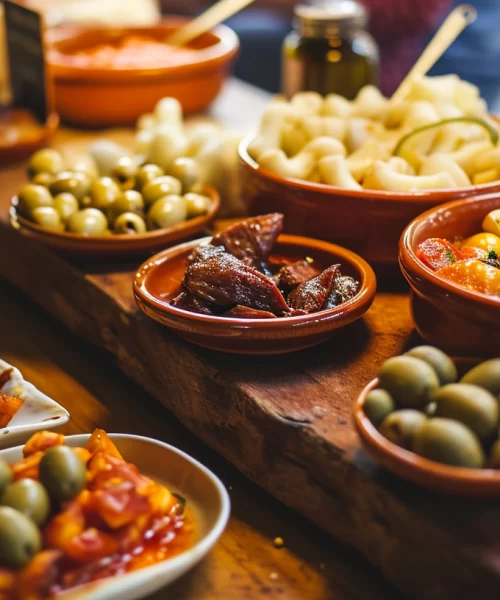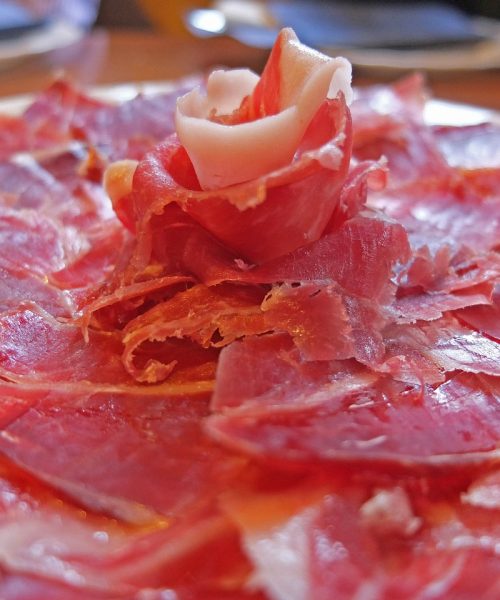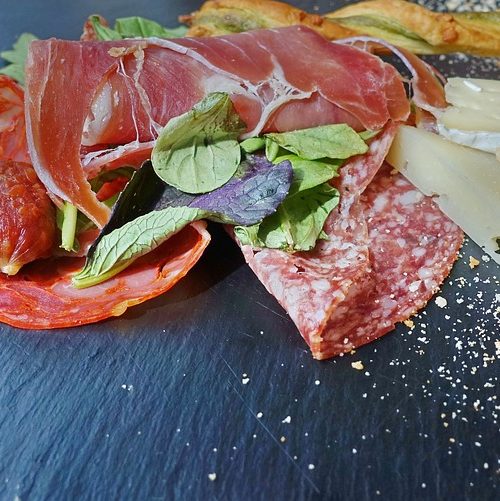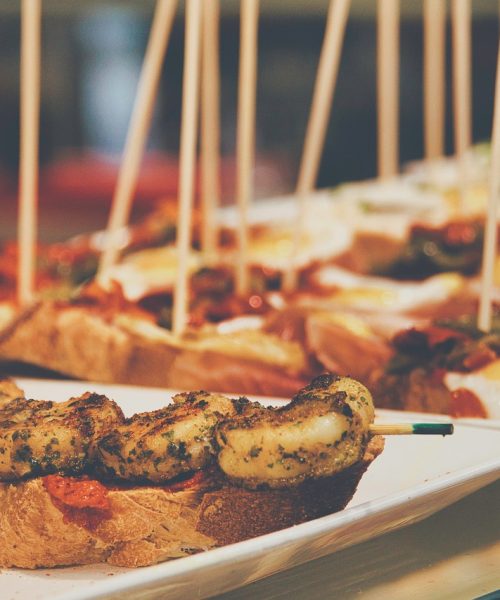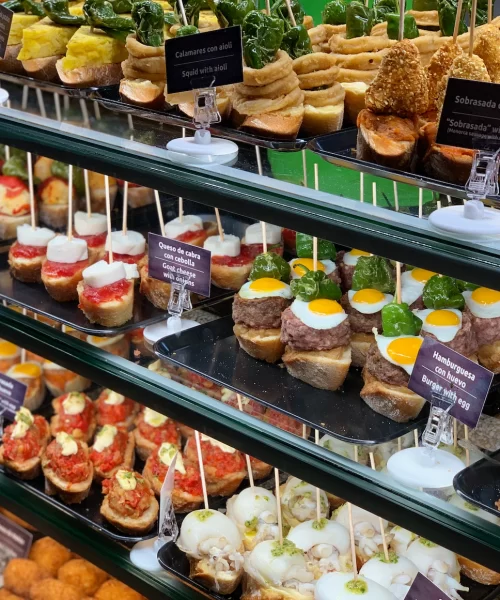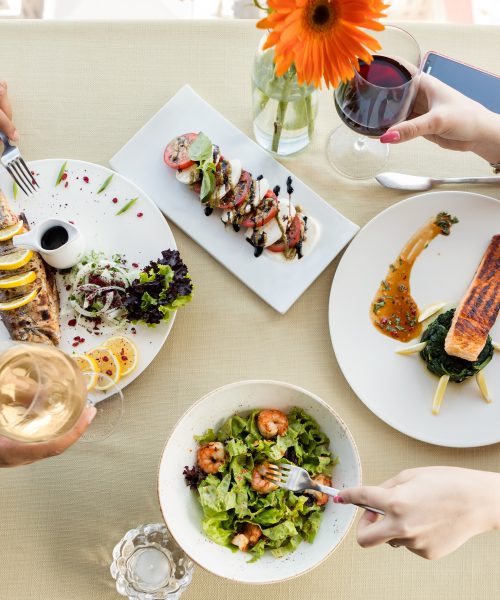The History of Tapas
Usually, tapas are served as an appetizer in Spanish cuisine, though they may also be served as a main course. Depending on the region, tapas may be served hot or cold, and can be combined with other dishes to form a full meal. In some Central American countries, tapas are also known as bocas.
Common tapas in Spain
Whether you are visiting Spain or looking to make your own Spanish meals, you are bound to find some of the country’s most popular tapas. These traditional small plates are served hot and usually accompany alcoholic beverages. You can find a wide variety of tapas in Spain, but each region has its own take on the dish.
One of the most popular tapas in Spain is a tortilla, a potato omelet that is cut into slices. This dish is easy to prepare and can be served as an appetizer.
Another typical Spanish tapa is calamari, a deep-fried battered squid that is served with olive oil. Some restaurants also serve squid croquettes. The best tortilla is moist and thick, like a cake.
Another popular tapa in Spain is papas bravas, which are crispy potato cubes topped with a spicy red sauce. These tapas are served hot or cold. Other popular versions substitute cured pork or baby eels.
Another popular Spanish dish is stuffed mussels. These mussels are stuffed with onion and breadcrumbs and then lightly fried. They are then served with mojo sauce and Albqrino wine.
Spanish snails are a delicacy and a popular tapa. They are typically prepared in a simple way, cooked in water with vegetables. Some restaurants serve them with a creamy garlicky mayonnaise. Others serve them with a lemon sauce.
Another traditional Spanish dish is gambas al ajillo, garlic prawns. This tapa is served warm. You can also find fried squid or calamari at most restaurants.
Another common tapa in Spain is gilda, a salted anchovy dish. It is often served with a cocktail stick. You can also find anchovies marinated in vinegar, which are known as Buquerones. These are a popular tapa in Valencia.
Other popular tapas in Spain are ham croquettes and fried squid. These tapas are served on a bed of toasted bread and can be topped with meat or a side of aioli sauce.
You can also find Spanish versions of paella, a traditional rice dish. Paella incorporates meat, vegetables, and fish.
Some Spanish tapas are spicy and can be prepared ahead of time. Some can be found in grocery stores.
Vegetarian options on tapas
Whether you’re traveling to Spain or visiting your friends, it’s easy to find vegetarian options on tapas. Tapas are small dishes that are typically served as an appetizer in Spanish restaurants. They are often flavored with garlic, olive oil and spices. They are a great way to try new dishes without having to worry about overindulgence.
A typical tapas platter typically includes a selection of fresh vegetables. The platter is typically filled with cheese, breads and other accompaniments. It’s a light meal that’s perfect for enjoying as an appetizer or starter to a larger meal.
Patatas bravas is one of the most popular vegetarian tapas in Spain. These fried potatoes are served with a spicy tomato sauce. The sauce may contain cheese, but it’s normally vegan.
Another popular vegetarian tapa is escalivada. This is a vegetarian version of the traditional Padron dish. Escalivada comes in two flavors, hot and mild. It’s typically served with course salt.
There are many other vegetarian options on tapas, including croquetas. These are small fried dough balls that usually contain ham or cheese. The recipe can be easily converted to a vegan version.
Salamorejo is a Andalusian classic. This dish is accompanied by a hard boiled egg. It’s a great accompaniment to Rioja red wine. It’s traditionally garnished with cured ham. However, it’s also possible to order it without jamon.
Aside from the standard patatas bravas, there are a lot of other vegetarian tapas to try in Spain. Some of the more popular dishes are salmorejo, croquetas, and escalivada. However, you’ll want to make sure that your server knows you’re a vegetarian. It’s easy to get a little confused with the tapas menu if you’re not familiar with Spanish language.
Another great vegetarian dish is Spanish Spinach and Chickpeas. This simple dish contains garlic, vinegar, and spices. It may be boring at first, but it’s full of flavor. You can find it at most restaurants in Madrid and Sevilla.
You can also find a vegan version of the Olivier Salad in Spain. This salad is served at many bars in Spain. It includes boiled eggs, peas, potatoes, carrots, mayo, and agave instead of honey.
King Alfonso ordered a jerez or sherry while on a long trip
Whether you’re a fan of sherry or not, you’ll find that knowing the history of sherry is important to understand its true personality. As the name implies, sherry is a wine from the Spanish town of Jerez. The history of sherry is important to understand the origins of the wine and the factors that have influenced it throughout the years.
According to a geographer, the Phoenicians introduced the art of making wine to Spain. They settled in the area around 711 AD. They developed viticulture and exported wine to Rome and the Mediterranean Basin. After the introduction of the distillation process, viticulture flourished. The first set of viticulture rules were established by Columella in Jerez.
The Moors arrived in Jerez around 711 AD. They turned the city into a walled city and developed viticulture. They used alcohol to make medicinals and perfumes. Their trade boomed in Europe, which led to the Romans taking over the region.
After the end of the Moorish empire in the 14th century, Spanish sherry production began to take off. Sherry wines were important provisions for ships sailing to the New World. They were also exported to England under the Moorish name of “Sherish”. The first Spanish Wine Law was published in 1933, making reference to the Denomination of Origin Jerez.
In the early 20th century, a phylloxera epidemic hit the region. This forced the local population to drink alcohol for the first time. This led to a new problem for sherry. Since most sherry is a dry white wine, most of the time it is not bottled and therefore cannot be aged.
During the Spanish Crown’s exploits in the New World, sherry was also a popular drink in London. When Sir Francis Drake visited Cadiz in 1587, he “seized” 3,000 barrels of sherry, and made it fashionable in the English court.
King Alfonso X of Castile showed a great interest in sherry. He ordered a glass of sherry while on a long journey. He also requested that the sherry be covered by a piece of Iberico ham. This was to prevent sand from blowing into the drink.
Origins of the word tapa
Several theories have been put forth as to how the word tapa originated. Many accounts involve Spanish kings and historical figures. Others refer to tapas as a religious practice in India. Still others cite the Middle Ages as the origin of tapas. It is unclear which of these origins is correct. But tapas have become a part of Spanish culture and are served as small dishes in Spanish restaurants.
Tapas are small dishes served with drinks in Spanish restaurants. They are usually served hot or cold. The word tapa was originally used as a term to describe a piece of ham, cheese, or olives served on top of a glass of wine. Later, they were served as a snack before the main course.
The first recorded use of the word tapa was in the 13th century. It was used by King Alfonso X of Castile to describe a plate of food served with wine. King Alfonso X was an important figure in Spanish history. He was a ruler of Castile from 1253-1284. The king was known for his wisdom and often had to consume small portions of food to prevent the effects of alcohol.
King Alfonso X also decreed that all drinks should be served with food. This was to prevent flies from entering the glass and causing a foul smell. The king also wanted to prevent drunken people from leaving taverns. Keeping the flies at bay was achieved by putting a slice of ham on top of the drink.
It was also common for bartenders to cover the drink with bread. This was done to keep flies away and to prevent dust from entering the glass. This led to the creation of several snacks that bartenders served to increase alcohol sales.
When people drink sherry, they generally use a thin slice of bread to cover the glass. Normally, a ham or chorizo slice was placed on top of the drink.
Another popular tapa was gazpacho, which was a tomato soup made in summer. Gazpacho was also popular in southern Spain.
Although the origins of tapas are not fully understood, they are believed to have originated in southern Spain. The word is derived from the Spanish verb tapar, which means to cover.

